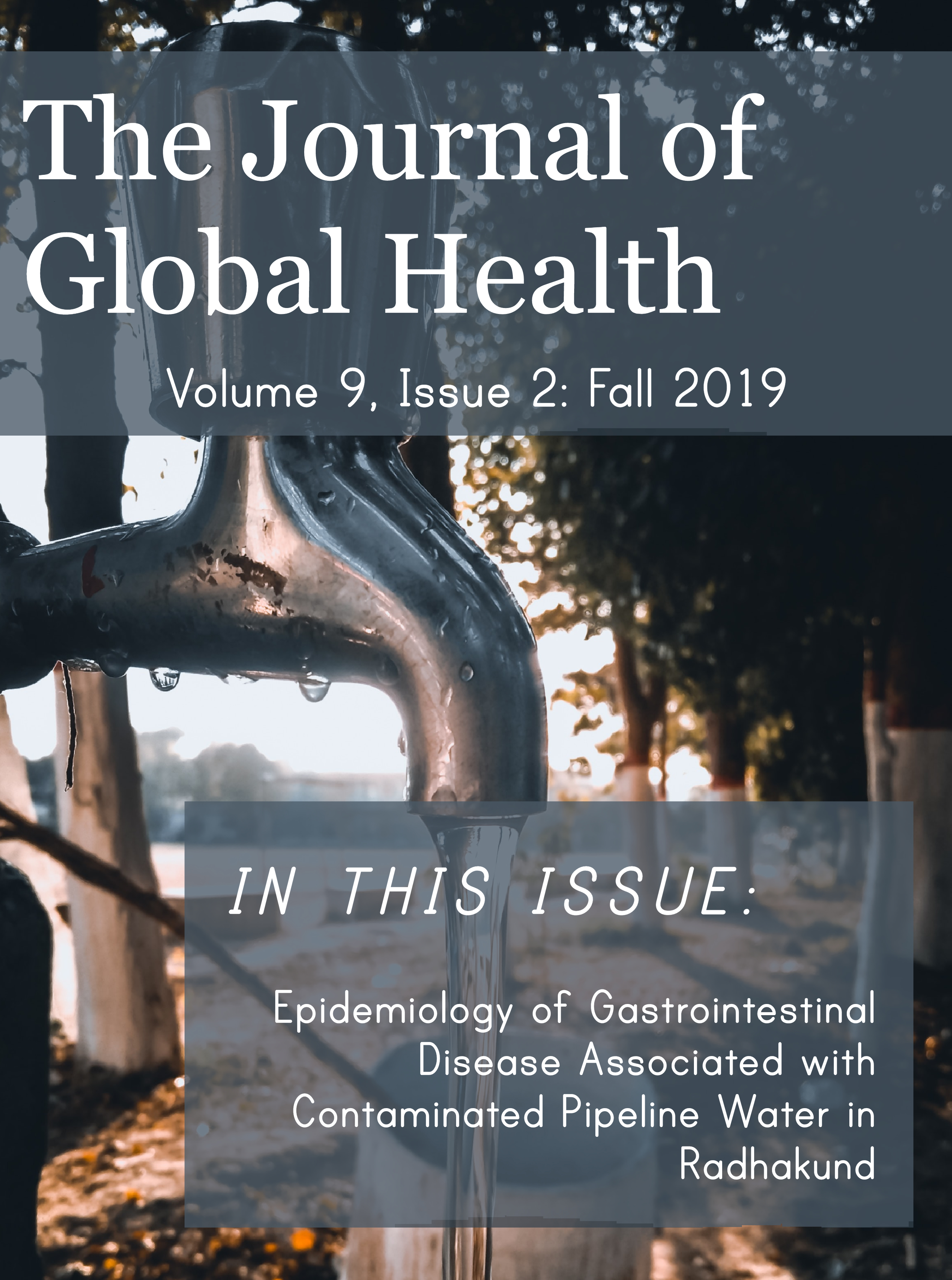Outbreak investigation of acute diarrheal disease (ADD) during a religious mass gathering associated with drinking contaminated pipeline water, Radhakund, Uttar Pradesh, India, October— November 2016
Main Article Content
Abstract
Background: In 2015, there were >12 million acute diarrheal disease (ADD) cases with 1,216 deaths reported in India; 75,347 cases and 320 deaths were reported from Uttar Pradesh state. A suspected ADD outbreak was reported from Radhakund town, Uttar Pradesh (population = 11,488 as per census 2011) on November 11, 2016 during a religious festival with >10,000 pilgrims. We investigated to describe the epidemiology, identify risk factors and recommend preventive measures.
Methods: We defined a suspect case as ≥3 loose stools within 24 hours in anyone residing in Radhakund town between October 31 and November 11, 2016. We identified cases by reviewing hospital records and by house—to—house survey. We conducted a 1:2 unmatched case—control study using a structured questionnaire to identify risk factors. Stool for cultures were not collected by hospitals and no active cases were present during the investigation for testing. We assessed water supply and sanitation of the town and tested water samples for fecal contamination.
Results: We identified 339 cases (hospital records=273; house-to-house=66) ; 285 (84%) were pilgrims. Median age was 60 years (range 1—80 years), 69% female. There were 117 (35%) hospitalizations and two deaths. Symptoms were vomiting (94%), abdominal pain (23%), and fever (3%). Cases were clustered around areas receiving drinking water from pipeline A and peaked on 3 and 5 November 2016. Among 44 cases and 81 controls, only drinking water from pipeline A (aOR=9.6 [95% CI = 3.0—29.5]) and illiteracy (aOR=23.2 [95% CI = 5.9—91.0]) were associated with illness in multivariate analysis. We observed sewage overflow from community toilets near tube-wells supplying pipeline A. Pipeline A is >40 years old with frequent cracks and leaks. Among four water samples from pipeline A, two were positive for Vibrio cholerae.
Conclusions: This was a point-source localized ADD outbreak, probably cholera, predominantly among pilgrims in Radhakund associated with drinking water from a pipeline contaminated with Vibrio cholerae. Despite the limitation of pilgrims not being available for the analytical study, we were able to determine the likely source epidemiologically based on affected residents in the community. We recommended chlorination of water, relocation of public toilets away from tube—wells, repair of pipeline A, routine water surveillance and enhanced sanitation facilities for pilgrims.
Article Details

This work is licensed under a Creative Commons Attribution 4.0 International License.

